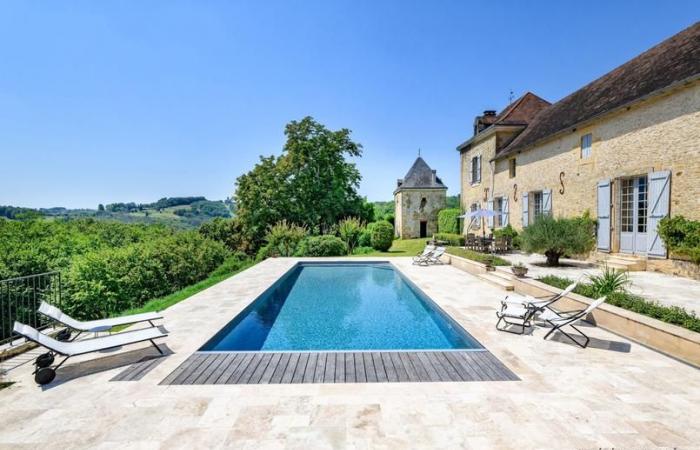Home staging, or enhancement of a home, dear to Stéphane Plaza, deserves to be known. Please note that pool staging also exists. This involves renovating the swimming pool to give it a makeover or installing equipment to reduce its environmental impact. Even if the number of private swimming pools increased by 30% in 2019, it fell by 16% between 2022 and 2023. “In 2023, with the decline in purchasing power, families will have to make budgetary decisions. In 2024, the growth of the swimming pool market was disrupted by a difficult geopolitical context, by a drop in real estate transactions and by not very favorable weather. But at least we won't run out of water next year as there was no drought », tries to reassure Gilles Mouchiroud, vice-president of the Federation of swimming pool and spa professionals.
A quarter of private swimming pools have already taken the plunge
Caroline Blache, swimming pool specialist in Drôme, specializing in the construction, renovation and maintenance of private and collective swimming pools, affirms that swimming pool specialists have “a role to play in the sustainability of our sector, a relatively dynamic activity. A renovated swimming pool satisfies the owner, limits the consumption of new resources and offers a more sustainable solution“. The solution is called pool staging.
«Pool staging is already a reality for 30% of French in-ground swimming pools which have undergone at least one pool staging operation. We tend to say that renovation is only part of our work when it is really part of our market. Let's think about a makeover, technical renovation such as new filtration systems, LED lighting, variable speed pumps. You can renovate your swimming pool aesthetically but also technically», assures Stéphane Figueroa, president of the FPP.
Renovated swimming pools that consume less electricity
Swimming pools built around twenty years ago really need a facelift. “At the time, private swimming pools were modeled on public swimming pools. They were very deep with large volumes of water. The bottom of these swimming pools can be raised to reduce the depth of the pool and reduce their water consumption.», suggests Nathalie Saget, vice-president of the FPP.
The uses of swimming pools have changed and the FPP invites professionals to adapt to this evolution in consumption patterns: “In a swimming pool, you don't necessarily swim. Swimming pools have become a living space, a moment of sharing with family, a fun element», says Nathalie Saget. Especially since a renovation of his private swimming pool would bring a 20% added value to his property. “A modern swimming pool consumes up to 40 times less electricity than 40 years ago“, she assures. In 1980, a filtration pump consumed 5600 kW per year. Today, swimming pools can be equipped with a variable speed pump for an annual energy consumption of only 860 kW/h/year.






